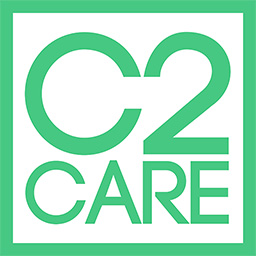How do you experience Post-Traumatic Stress Disorder?
Car accident, assault, rape, war, isolation, kidnapping … so many situations that are traumatic and have repercussions on the rest of our lives. It is difficult to move forward after having experienced such an emotional shock and has many consequences on the present and the future. A Post-Traumatic Stress Disorder could then develop.

TABLE OF CONTENTS
- What is post-traumatic stress disorder?
- How does post-traumatic stress disorder manifest itself?
- What are the physical symptoms?
- What are the psychological symptoms?
- What are the day-to-day implications?
- What are the long-term risks?
- How can you manage your anxiety on a daily basis?
- How to treat your post-traumatic stress disorder?
1. What is post-traumatic stress disorder?
Post-Traumatic Stress Disorder (PTSD) is a disorder that develops following a traumatic event. It is part of the family of severe anxiety disorders and is not to be taken lightly.
This disorder occurs following exposure to an event that affects you directly, or that you have experienced as a witness. It can be a confrontation with death (or with an imminent risk of death), an injury, a sexual assault or rape, violence, etc. Any event that puts your psychic or physical life at risk.
When difficult events occur, it is normal to experience shock. This state of shock can last up to one month following the event and is considered acute stress. Beyond that, if this feeling persists, we speak of post-traumatic stress. The more one tries to minimize, bury or hide the emotions that may have been felt in this situation, the more likely it is that the anxiety related to this event will persist.
2. How does post-traumatic stress disorder manifest itself?
Post-traumatic stress disorder does not necessarily manifest itself directly after the traumatic event. You may feel that you have dealt with the anxiety and then, without warning, months or years later an event occurs that brings back the anxiety or event. If you are experiencing these symptoms, or if you are experiencing situations that are difficult to understand, remember that your body is trying to protect you. So don’t feel guilty for feeling the way you do, and don’t blame your body for trying to take care of you.
3. What are the physical symptoms?
Generally an anxiety disorder characterizes the state of post-traumatic stress. This manifests itself physically, usually by panic attacks. It can be difficulties to breathe, tachycardia, sweating, trembling, headaches, stomach ache, nausea, feeling of soft legs…
4. What are the psychological symptoms?
There is no one way to experience trauma. You may feel that you are no longer able to feel emotions. You may feel that everything around you is a blur, that you are now wandering aimlessly, without understanding and without being understood. You may even go so far as to run away from all situations that could be close or far from this distressing situation, in order to be sure that you will never feel what you felt.
5. What are the day-to-day implications?
In your daily life, you may feel the weight of this trauma weighing on you. You may notice that you are exhausted and that every activity requires a lot of energy. You may also notice that you have difficulty falling asleep, that you wake up, that you have nightmares etc. Sleep disorders are then latent and poison your life. However, a good sleep is fundamental to allow you to respond to your emotions. It is therefore important to take care of it and to make sure that you adopt the right strategies for falling asleep.
You may also have attentional difficulties. It is difficult for you to concentrate on the tasks you are doing, whether at work, at school, in your leisure time, in certain activities, etc. You may even feel that you are not very present when you are in a group or a social place. You have difficulty following a conversation
6. What are the long-term risks?
In the longer term, post-traumatic stress disorder can affect your daily life. Indeed, you feel anxious in many situations, and you reduce your outings and your social interactions. You may then limit your social circle and suffer from isolation.
In addition, you may notice that you are more irritable with those around you, less patient. You have the impression that you have changed, that you no longer recognize yourself. There are certain activities that you used to love to do and that you no longer do, that no longer thrill you. It is also possible to develop a growing reluctance or a real aversion to public places and to develop agoraphobia or social phobia or generalized anxiety.
It also happens that in order to numb the pain and the aches, you start to consume products (alcohol, tobacco, drugs…) and that you fall into an addictive behavior. It has also been found that people with post-traumatic stress disorder are more prone to eating disorders (whether anorexia nervosa, bulimia, hyperphagia …).
Finally, about 1 in 3 people who have experienced trauma experience severe depression in the months or years following the traumatic event.
In order to avoid these various complications, it is important to consult a health professional quickly after the traumatic event.
7. How can you manage your anxiety on a daily basis?
Follow-up with a health professional is essential. However, you can already use some techniques to calm your anxiety on a daily basis and to help you ease your possible anxiety attacks, which you can learn to manage.
It is important to accept the emotions you feel, not to try to reject them at all costs, and not to feel guilty for feeling what you feel. And before being able to accept them, it is necessary to be able to identify them, and understand them in order to be able to free yourself from them.
The TIPI method is a technique you can use to detach yourself from unpleasant feelings. It consists of 4 steps: identifying the emotion, feeling the emotion again, letting go of your emotions and accepting to feel different emotions in the same situation. It may be difficult for you, at the beginning, to put yourself back in the situation, but you can already stop at the stage of identifying the emotion, which is already a very important step that you can take in therapy.
When you feel your anxiety rising, do cardiac coherence. This is a quick exercise (no more than 5 minutes), which will allow you to regulate your heart rate, and thus your breathing. You will see quick results in the moment, but you can also make it a routine to see a more lasting change.
8. How to treat your post-traumatic stress disorder?
It is essential to seek help from a health professional (psychologist, psychiatrist). Wanting to reject this event at all costs and not talking about it because it is too painful for you risks reinforcing your anxieties and increasing the consequences of this event. Even if it is not easy to talk about it, being able to externalize the event to a person who accompanies you in the care is the best way to free yourself from it. In order to heal these problems, the technique that has proven to be the most effective is cognitive-behavioral therapy (CBT). It allows us to confront our anxieties, to understand how our anxiety works in the situation. Remember that your trauma does not define you. Start by creating positive self-instructions that will give you the courage to go into therapy.
Virtual reality therapy is part of CBT and allows you to recontextualize the traumatic place/event in a recreated environment. It is an undeniable complement to CBT, a real contribution to cognitive-behavioral therapies, which offers rapid and lasting results. This environment leaves no room for randomness and therefore offers you a safe place in which you can relive your trauma in a gradual manner. The health professional who accompanies you will teach you, in parallel with this exposure, to manage your anxieties (with, among others, the ACARA system), to reduce your symptoms, to live again in a healthy daily life and to find serenity.

